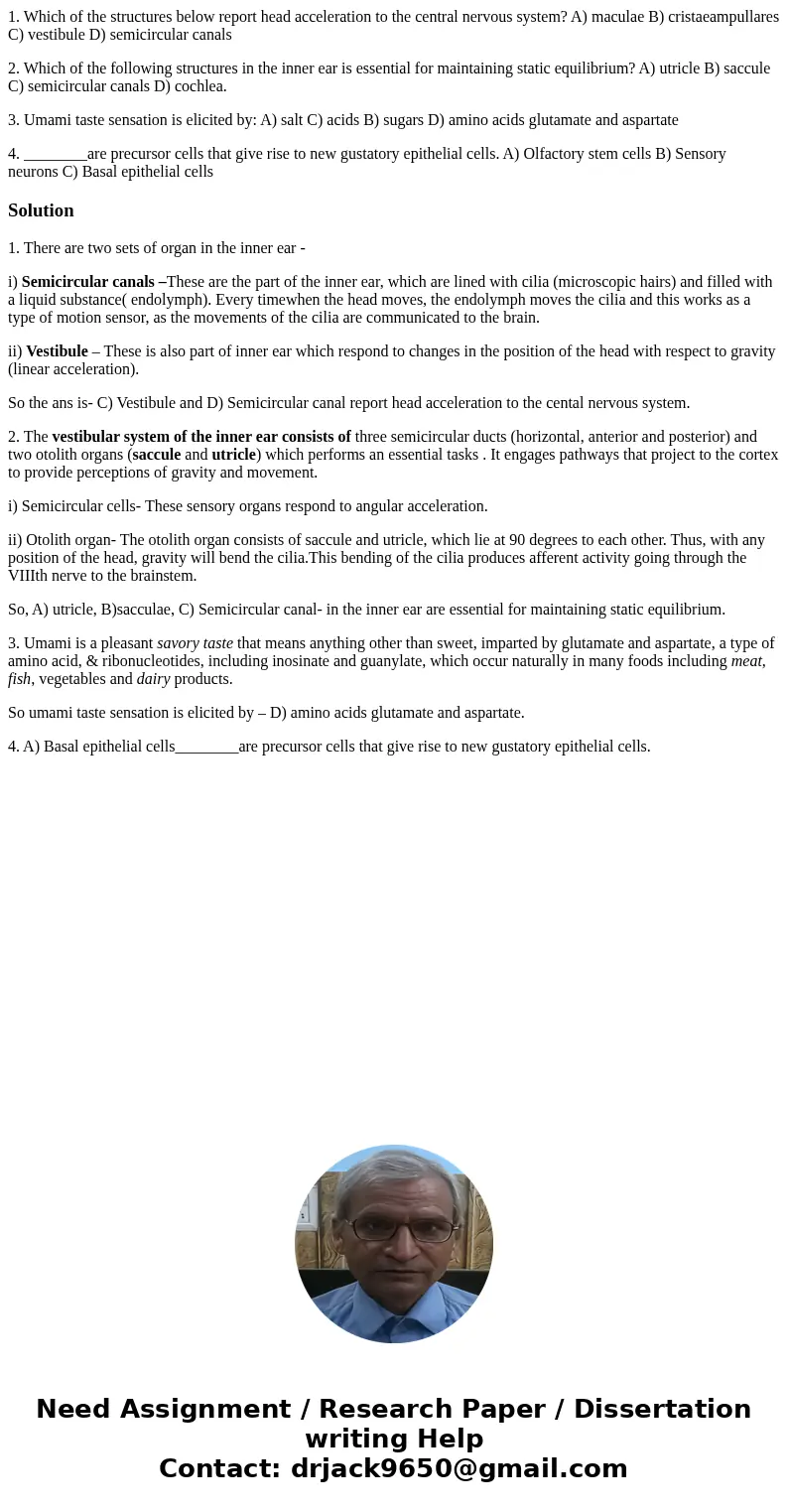1 Which of the structures below report head acceleration to
1. Which of the structures below report head acceleration to the central nervous system? A) maculae B) cristaeampullares C) vestibule D) semicircular canals
2. Which of the following structures in the inner ear is essential for maintaining static equilibrium? A) utricle B) saccule C) semicircular canals D) cochlea.
3. Umami taste sensation is elicited by: A) salt C) acids B) sugars D) amino acids glutamate and aspartate
4. ________are precursor cells that give rise to new gustatory epithelial cells. A) Olfactory stem cells B) Sensory neurons C) Basal epithelial cells
Solution
1. There are two sets of organ in the inner ear -
i) Semicircular canals –These are the part of the inner ear, which are lined with cilia (microscopic hairs) and filled with a liquid substance( endolymph). Every timewhen the head moves, the endolymph moves the cilia and this works as a type of motion sensor, as the movements of the cilia are communicated to the brain.
ii) Vestibule – These is also part of inner ear which respond to changes in the position of the head with respect to gravity (linear acceleration).
So the ans is- C) Vestibule and D) Semicircular canal report head acceleration to the cental nervous system.
2. The vestibular system of the inner ear consists of three semicircular ducts (horizontal, anterior and posterior) and two otolith organs (saccule and utricle) which performs an essential tasks . It engages pathways that project to the cortex to provide perceptions of gravity and movement.
i) Semicircular cells- These sensory organs respond to angular acceleration.
ii) Otolith organ- The otolith organ consists of saccule and utricle, which lie at 90 degrees to each other. Thus, with any position of the head, gravity will bend the cilia.This bending of the cilia produces afferent activity going through the VIIIth nerve to the brainstem.
So, A) utricle, B)sacculae, C) Semicircular canal- in the inner ear are essential for maintaining static equilibrium.
3. Umami is a pleasant savory taste that means anything other than sweet, imparted by glutamate and aspartate, a type of amino acid, & ribonucleotides, including inosinate and guanylate, which occur naturally in many foods including meat, fish, vegetables and dairy products.
So umami taste sensation is elicited by – D) amino acids glutamate and aspartate.
4. A) Basal epithelial cells________are precursor cells that give rise to new gustatory epithelial cells.

 Homework Sourse
Homework Sourse